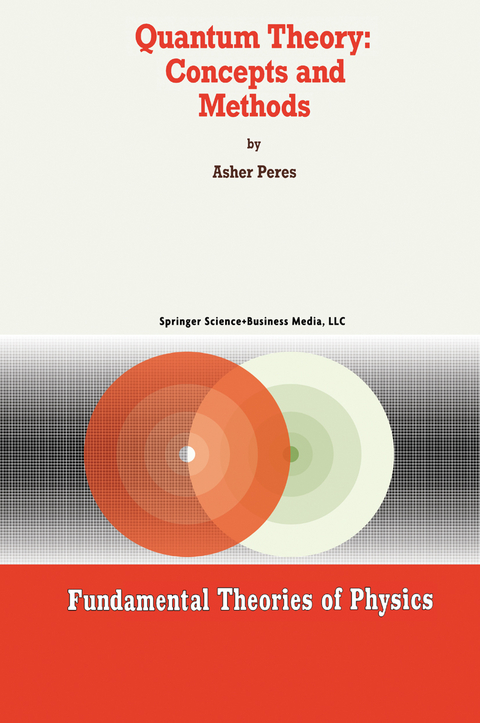
Quantum Theory: Concepts and Methods
Seiten
1995
Springer (Verlag)
978-0-7923-3632-7 (ISBN)
Springer (Verlag)
978-0-7923-3632-7 (ISBN)
There are many excellent books on quantum theory from which one can learn to compute energy levels, transition rates, cross sections, etc. The purpose of this book is to clarify the conceptual meaning of quantum theory, and to explain some of the mathematical methods which it utilizes.
There are many excellent books on quantum theory from which one can learn to compute energy levels, transition rates, cross sections, etc. The theoretical rules given in these books are routinely used by physicists to compute observable quantities. Their predictions can then be compared with experimental data. There is no fundamental disagreement among physicists on how to use the theory for these practical purposes. However, there are profound differences in their opinions on the ontological meaning of quantum theory. The purpose of this book is to clarify the conceptual meaning of quantum theory, and to explain some of the mathematical methods which it utilizes. This text is not concerned with specialized topics such as atomic structure, or strong or weak interactions, but with the very foundations of the theory. This is not, however, a book on the philosophy of science. The approach is pragmatic and strictly instrumentalist. This attitude will undoubtedly antagonize some readers, but it has its own logic: quantum phenomena do not occur in a Hilbert space, they occur in a laboratory.
There are many excellent books on quantum theory from which one can learn to compute energy levels, transition rates, cross sections, etc. The theoretical rules given in these books are routinely used by physicists to compute observable quantities. Their predictions can then be compared with experimental data. There is no fundamental disagreement among physicists on how to use the theory for these practical purposes. However, there are profound differences in their opinions on the ontological meaning of quantum theory. The purpose of this book is to clarify the conceptual meaning of quantum theory, and to explain some of the mathematical methods which it utilizes. This text is not concerned with specialized topics such as atomic structure, or strong or weak interactions, but with the very foundations of the theory. This is not, however, a book on the philosophy of science. The approach is pragmatic and strictly instrumentalist. This attitude will undoubtedly antagonize some readers, but it has its own logic: quantum phenomena do not occur in a Hilbert space, they occur in a laboratory.
Gathering the Tools.- to Quantum Physics.- Quantum Tests.- Complex Vector Space.- Continuous Variables.- Cryptodeterminism and Quantum Inseparability.- Composite Systems.- Bell’s Theorem.- Contextuality.- Quantum Dynamics and Information.- Spacetime Symmetries.- Information and Thermodynamics.- Semiclassical Methods.- Chaos and Irreversibility.- The Measuring Process.
| Reihe/Serie | Fundamental Theories of Physics ; 57 |
|---|---|
| Zusatzinfo | XIV, 450 p. |
| Verlagsort | Dordrecht |
| Sprache | englisch |
| Maße | 178 x 254 mm |
| Themenwelt | Sachbuch/Ratgeber ► Natur / Technik |
| Naturwissenschaften ► Physik / Astronomie ► Astronomie / Astrophysik | |
| Naturwissenschaften ► Physik / Astronomie ► Quantenphysik | |
| Naturwissenschaften ► Physik / Astronomie ► Theoretische Physik | |
| ISBN-10 | 0-7923-3632-1 / 0792336321 |
| ISBN-13 | 978-0-7923-3632-7 / 9780792336327 |
| Zustand | Neuware |
| Haben Sie eine Frage zum Produkt? |
Mehr entdecken
aus dem Bereich
aus dem Bereich
Grundlagen, Anwendungen in Astrophysik und Kosmologie sowie …
Buch | Softcover (2022)
Springer Spektrum (Verlag)
CHF 69,95
die Geschichte und Erforschung unserer Galaxie
Buch | Hardcover (2023)
C.Bertelsmann (Verlag)
CHF 40,80
Von Hubble-, James-Webb- und anderen Großteleskopen bis zu …
Buch | Softcover (2024)
Springer (Verlag)
CHF 32,15


